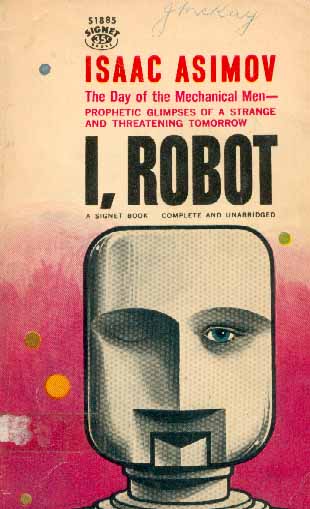|
 Asimov and
Clarke are two of the most popular writers of short stories in the history of
science fiction. The Nine Billion Names of God is one of Clarke's two most
famous short stories (the other being "The Sentinel", on which 2001 is based).
It came 11th in a 1968 poll of the Science Fiction Writers of America
association to find the best all-time short stories. Asimov and
Clarke are two of the most popular writers of short stories in the history of
science fiction. The Nine Billion Names of God is one of Clarke's two most
famous short stories (the other being "The Sentinel", on which 2001 is based).
It came 11th in a 1968 poll of the Science Fiction Writers of America
association to find the best all-time short stories.
Asimov had a Ph.D. in chemistry, worked as a college professor for a while
and published huge numbers of popular science books (as well as books on
virtually every other topic, such as Shakespeare and the Bible). The two Asimov
stories, though written in the 1940s and published in Astounding, were
anthologized in the early 1950s in the collection I Robot. Together with the
Foundation trilogy, this is probably his best known and most fondly remembered
work. "Runaround" was one of the first of his "Robot" stories to be written, and
served to introduce readers to his "Three Laws of Robotics". "Evidence" came
sometime later, and is the penultimate story in the collection. The last story
in the book, "The Evitable Conflict," takes the theme a little further. The hero
discovers that the giant computers running the world are plotting to discredit
their human rulers and sideline all challenges to their power. However, thanks
to the three laws, Asimov figures we are in good hands and has few worries.
Discussion Questions
Asimov
 | How does Asimov use science in "Runaround"? Does it remind you of any
other genre of popular fiction. |
 | The "Three Laws" are central to the robot stories. Are they plausible? Are
they scientific? |
 | How realistic is Asimov's robot technology? What does it tell us about the
time it is written in? Do you detect and inspirations for it in pre-twentieth
century concepts? |
 | By "Evidence", Asimov's attention has moved more toward politics. From the
story, what would you say his own view are? How would you compare these to
those of Things To Come and the other stories we have read? |
Clarke
 | What point is Clarke trying to make here, and how does it differ from the
ideas of Asimov and Heinlein? |
 | What are the similarities and differences between his attitudes to
religion and those of Miller? |
Overall
 | These stories and most of the others we have read include computers (or
robots). What abilities or tasks did these writers predict for computers that
they have not so far acquired? |
 | (continued) In contrast, there was a great deal about the subsequent
development of computer technology that would have taken them by surprise.
What did they miss? |
Resources:
|